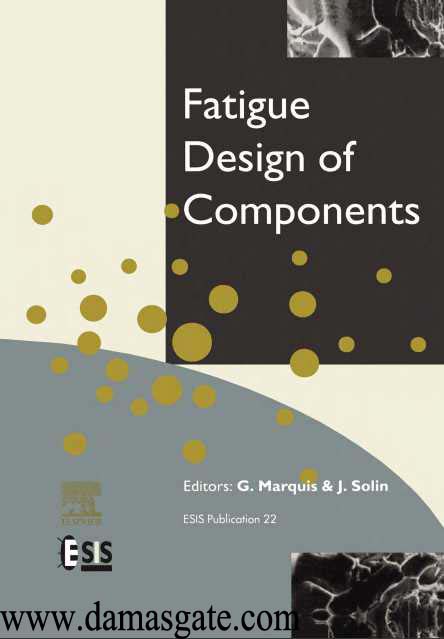Fatigue Design of Components, Gary Marquis & J. Solin

PREFACE
This volume represents a selection of papers presented at the Fatigue Design 1995 Symposium held in Helsinki, Finland. The meeting was organised by VTT Manufacturing Technology and co-sponsored by the European Structural Integrity Society (ESIS) and the American Society for Testing and Materials (ASTM). FD'95 was planned following positive response to the previous Fatigue Design 1992 symposium and resulting special ESIS publication (Fatigue Design, ESIS 16).
One objective of the Fatigue Design symposium series is to help bridge the gap that sometimes exists between researchers and engineers responsible for designing components against fatigue failure. The large portion of papers authored by engineers working in industry illustrates that this objective is being realised. Papers provide an up-to-date survey of engineering practice and a preview of some design methods that are advancing toward routine application.
Subject areas touch many fields of
engineering: automotive and ground vehicle industries, structural engineering, and power generation. It is our belief that such multi-disciplinary forums help stimulate the transfer of technologies from one field to the next and between academia, researchers and practising engineers. A majority of the papers deal with testing, design and analysis of real components. The problems are real and the methods developed and applied can hopefully provide new ideas for others responsible for ensuring adequate fatigue strength for components and structures.
Readers will find several key themes which arise from these proceedings. First is the increasingly important role that multiaxial fatigue continues to play in component design, testing and analysis. A related theme is the continued move toward fatigue testing and design using more realistic load histories. Uniaxial constant amplitude load testing is being supplimented by spectrum and multiaxial load testing. The third significant theme is the developing role of reliability methods in fatigue design. Innovative designs cannot rely on previously determined safety factors. Optimisation demands that variability in material properties, component usage and manufacturing be considered. The final key theme is the importance of introducing design rules that are easy to apply. Design methods must always provide a balance between accuracy and simplicity appropriate for the industry and type of component being considered.
A large number of people contributed to the success of both the symposium and this publication. The editors gratefully acknowledge the roles played by the scientific committee, manuscript reviewers, advisory board, as well as the staff members at ESIS, Elsevier, ASTM, and VTT. The most significant effort and greatest thanks, however, is due the authors who have invested countless hours both in the laboratory and in preparing their papers.
G. Marquis and J. Solin, Editors
Download
http://s18.alxa.net/s18/srvs2/01/Fat...is.J.Solin.rar